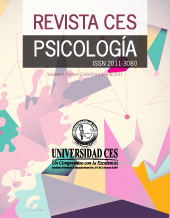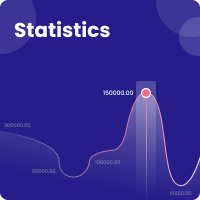Contributions from functional neuroimaging studies to the comprehension of traumatic child experiences: preliminary findings
DOI:
https://doi.org/10.21615/cesp.5437Keywords:
posttraumatic stress disorder, PTSD, neuropsychology, functional magnetic resonance imaging, fMRI, child traumaAbstract
This study aimed to describe the cerebral activation patterns using fMRI (Functional Magnetic Resonance Imaging) technology in a sample of 15 children with Posttraumatic Stress Disorder (PTSD) and 7 with no PTSD. The study used a Quasi-experimental methodology where two experimental tasks were applied: an emotional face task and a version of an emotional Stroop task. The results point out differences in the group of PTSD on the processing of negative stimuli and changes in their frontal lobe activation. These preliminary results suggest that early traumatic experiences affect typical brain development patterns. And explicit and implicit variables involved in the traumatic experiences are discussed as a part of any intervention process.
Downloads
References
Anderson, V. A., Anderson, P., Northam, E., Jacobs, R., & Catroppa, C. (2001). Development of executive functions through late childhood and adolescence in an Australian sample. Developmental neuropsychology, 20(1), 385-406. https://doi.org/10.1207/s15326942dn2001_5
Ardila, A. (2013). Development of metacognitive and emotional executive functions in children. Applied Neuropsychology: Child, 2(2), 82-87. https://doi.org/10.1080/21622965.2013.748388
Asociación Médica Mundial (2018). Declaración de Helsinki de la AMM-Principios éticos para las investigaciones médicas en seres humanos.
Barrera-Valencia, M., Calderón-Delgado, L., Trejos-Castillo, E., & O’Boyle, M. (2017). Cognitive profiles of Post-traumatic Stress Disorder and depression in children and adolescents. International Journal of Clinical and Health Psychology, 17(3), 242-250. https://doi.org/10.1016/j.ijchp.2017.05.001
Barrera, M., Calderón, L., & Bell, V. (2013). The cognitive impact of sexual abuse and PTSD in children: a neuropsychological study. Journal of child sexual abuse, 22(6), 625-638. https://doi.org/10.1080/10538712.2013.811141
Beckmann, C. F., Jenkinson, M., & Smith, S. M. (2003). General multilevel linear modeling for group analysis in FMRI. NeuroImage, 20(2), 1052–1063. https://doi.org/10.1016/S1053-8119(03)00435-X
Braunstein, L. M., Gross, J. J., & Ochsner, K. N. (2017). Explicit and implicit emotion regulation: a multi-level framework. Social cognitive and affective neuroscience, 12(10), 1545-1557. https://doi.org/10.1093/scan/nsx096
Bustos, P., Rincón, P., & Aedo, J. (2009). Validación Preliminar de la Escala Infantil de Síntomas del Trastorno de Estrés Postraumático (Child PTSD Symptom Scale, CPSS) en Niños/as y Adolescentes Víctimas de Violencia Sexual. Psykhe (Santiago), 18(2), 113–126. https://doi.org/10.4067/S0718-22282009000200008
Carrión, V. G., & Weems, C. F. (2017). Neuroscience of Pediatric PTSD. Oxford University Press.
De Young, A. C., Kenardy, J. A., & Cobham, V. E. (2011). Trauma in early childhood: A neglected population. Clinical child and family Psychology Review, 14(3), 231. https://doi.org/10.1007/s10567-011-0094-3
Fuster, J. M. (2015). The prefrontal cortex. Academic Press.
Gyurak, A., Gross, J. J., & Etkin, A. (2011). Explicit and implicit emotion regulation: a dual-process framework. Cognition and emotion, 25(3), 400-412. https://dx.doi.org/10.1080%2F02699931.2010.544160
Instituto Colombiano de Bienestar Familiar [ICBF]. (2018). Sistema único de información de la niñez. http://www.suin-snbf.gov.co/suin/Pages/PorIndicador.aspx?id=6
Instituto Colombiano de Medicina Legal y Ciencias Forenses. (2018). Indicadores de infancia, adolescencia y juventud. http://www.suin-snbf.gov.co/suin/Pages/PorIndicador.aspx?id=6
Kribakaran, S., Danese, A., Bromis, K., Kempton, M. J., & Gee, D. G. (2019). Meta-analysis of structural magnetic resonance imaging studies in pediatric posttraumatic stress disorder and comparison with related conditions. Biological Psychiatry: Cognitive Neuroscience and Neuroimaging, 5(1), 23-34. https://doi.org/10.1016/j.bpsc.2019.08.006
Lundqvist, D., Flykt, A., & Öhman, A. (1998). The Karolinska Directed Emotional Faces – KDEF, CD ROM from Department of Clinical Neuroscience, Psychology section, Karolinska Institutet.
Lezak, M.D., Howieson, D.B., Bigler, E.D., & Tranel, D. (2012). Neuropsychological Assessment (Fifth Edition). Oxford University Press..
Malarbi, S., Abu-Rayya, H. M., Muscara, F., & Stargatt, R. (2017). Neuropsychological functioning of childhood trauma and post-traumatic stress disorder: A meta-analysis. Neuroscience & Biobehavioral Reviews, 72, 68-86. https://doi.org/10.1016/j.neubiorev.2016.11.004
Masten, C. L., Guyer, A. E., Hodgdon, H. B., McClure, E. B., Charney, D. S., Ernst, M., ... Monk, C. S. (2008). Recognition of facial emotions among maltreated children with high rates of post-traumatic stress disorder. Child abuse & neglect, 32(1), 139-153. https://doi.org/10.1016/j.chiabu.2007.09.006
Milani, A. C. C., Hoffmann, E. V., Fossaluza, V., Jackowski, A. P., & Mello, M. F. (2017). Does pediatric post‐traumatic stress disorder alter the brain? Systematic review and meta‐analysis of structural and functional magnetic resonance imaging studies. Psychiatry and clinical neurosciences, 71(3), 154-169. https://doi.org/10.1111/pcn.12473
Noriega, I., Trejos-Castillo, E., Chae, Y., Calderon-Delgado, L., Barrera-Valencia, M., Al-Khalil, K., & O'Boyle, M. W. (2020). Emotional memory processing in post-traumatic stress disorder affected Colombian youth. International Journal of Psychology: Journal International de Psychologie, 56 (3), 387-393. https://doi.org/10.1002/ijop.12730
Organización Mundial de la Salud [OMS]. (2018). Child Maltreatment https://www.who.int/health-topics/violence-against-children#tab=tab_1
Sheehan, D. V., Lecrubier, Y., Sheehan, K. H., Amorim, P., Janavs, J., Weiller, E., … Dunbar, G. C. (1998). The Mini-International Neuropsychiatric Interview (M.I.N.I.): The development and validation of a structured diagnostic psychiatric interview for DSM-IV and ICD-10. Journal of Clinical Psychiatry, 59(SUPPL. 20), 22–33. https://doi.org/10.1016/S0924-9338(99)80239-9
Thomaes, K., Dorrepaal, E., Draijer, N., de Ruiter, M. B., Elzinga, B. M., Sjoerds, Z., … Veltman, D. J. (2013). Increased anterior cingulate cortex and hippocampus activation in Complex PTSD during encoding of negative words. Social Cognitive and Affective Neuroscience, 8(2), 190–200. https://doi.org/10.1093/scan/nsr084
van den Bulk, B. G., Somerville, L. H., van Hoof, M. J., van Lang, N. D., van der Wee, N. J., Crone, E. A., & Vermeiren, R. R. (2016). Amygdala habituation to emotional faces in adolescents with internalizing disorders, adolescents with childhood sexual abuse related PTSD and healthy adolescents. Developmental cognitive neuroscience, 21, 15-25. https://doi.org/10.1016/j.dcn.2016.08.002
Woolrich, M. (2008). Robust group analysis using outlier inference. NeuroImage, 41(2), 286–301. https://doi.org/10.1016/j.neuroimage.2008.02.042
Woolrich, M. W., Behrens, T. E. J., Beckmann, C. F., Jenkinson, M., & Smith, S. M. (2004). Multilevel linear modelling for FMRI group analysis using Bayesian inference. NeuroImage, 21(4), 1732–1747. https://doi.org/10.1016/j.neuroimage.2003.12.023
Worsley, K. J., Taylor, J. E., Tomaiuolo, F., & Lerch, J. (2004). Unified univariate and multivariate random field theory. NeuroImage, 23, S189–S195. https://doi.org/10.1016/j.neuroimage.2004.07.026
Zapata-Orozco, S., Zapata-González, J., Gantiva, C., Suárez-Pico, P., & Barrera-Valencia, M. (2020). Construcción y validación del Repositorio de Expresiones Faciales Emocionales Colombianas. Suma Psicológica, 27(2), 142-149. https://doi.org/10.14349/sumapsi.2020.v27.n2.8
Downloads
Published
How to Cite
Issue
Section
License
Copyright (c) 2021 CES Psicología

This work is licensed under a Creative Commons Attribution-NonCommercial-ShareAlike 4.0 International License.
Each manuscript is accompanied by a statement specifyingThat the materials are unpublished, that have not been previously published in printed formatElectronic and that they will not be presented to any other means before knowing the decision of the magazine. ThroughoutIn case, any previous publication, sea in printed or electronic form, must be made known to the editorial staffWriting The authors attach a signed statement stating that, and the manuscript is acceptedFor publication, the rights of reproduction are the exclusive property of the Journal CES Psychology.


